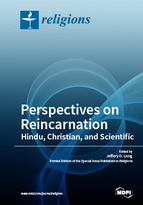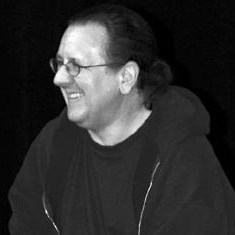Perspectives on Reincarnation: Hindu, Christian, and Scientific
A special issue of Religions (ISSN 2077-1444).
Deadline for manuscript submissions: closed (31 July 2017) | Viewed by 141840
Special Issue Editor
Special Issue Information
Dear Colleagues,
The topic of reincarnation, or rebirth, is an intensely interesting one. Popular response to recent sessions held on this topic at the American Academy of Religion’s annual meetings (including a standing-room-only session held by the Society for Hindu–Christian Studies at the 2015 meeting, as well as sessions at the 2016 DANAM meeting) demonstrate that this is an issue of special interest to those whose focus is either Hindu–Christian relations or issues relating to religion and science (or both).
No recent publications, however, have dealt extensively with this issue in an interdisciplinary fashion that draws upon the multiple perspectives from which it can be approached. The purpose of this special issue is to fill this gap, bringing together perspectives from religious studies, philosophy, theology, and the sciences (specifically, psychology and physics) to address the question: Is there such a phenomenon as rebirth? Why or why not? How might one go about knowing whether such a phenomenon is a reality? What historical perspectives, specifically from Hindu and Christian traditions, can be brought to bear upon this question? And what, if anything, can science potentially contribute to what has traditionally been a religious and philosophical question? The aim here is to advance mutual understanding among those who hold differing views on this topic, as well as, potentially, advancing understanding of the topic itself.
Dr. Jeffery D. Long
Guest Editor
Manuscript Submission Information
Manuscripts should be submitted online at www.mdpi.com by registering and logging in to this website. Once you are registered, click here to go to the submission form. Manuscripts can be submitted until the deadline. All papers will be peer-reviewed. Accepted papers will be published continuously in the journal (as soon as accepted) and will be listed together on the special issue website. Research articles, review articles as well as short communications are invited. For planned papers, a title and short abstract (about 100 words) can be sent to the Editorial Office for announcement on this website.
Submitted manuscripts should not have been published previously, nor be under consideration for publication elsewhere (except conference proceedings papers). All manuscripts are thoroughly refereed through a double-blind peer-review process. A guide for authors and other relevant information for submission of manuscripts is available on the Instructions for Authors page. Religions is an international peer-reviewed open access monthly journal published by MDPI.
Please visit the Instructions for Authors page before submitting a manuscript. Submitted papers should be well formatted and use good English. Authors may use MDPI's English editing service prior to publication or during author revisions.
Keywords
- reincarnation
- rebirth
- Hindu-Christian dialogue
- Hinduism
- Christianity
- parapsychology
- science and religion






